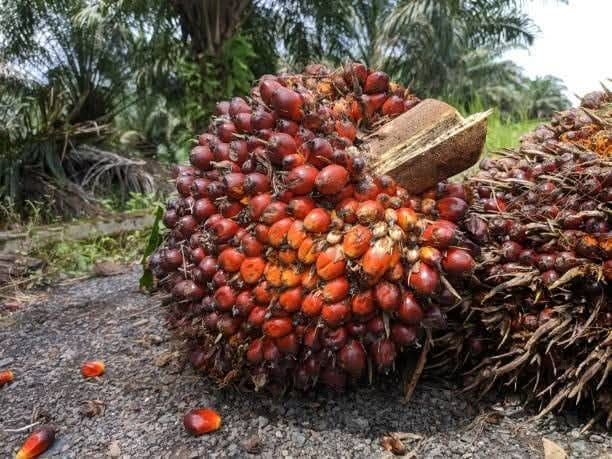The African oil palm (Elaeis guineensis) farming in Nigeria
The African oil palm (Elaeis guineensis) is a highly valuable tropical plant cultivated primarily for its fruit, which yields both palm oil and palm kernel oil. Originating from West and Central Africa, this palm tree is renowned for its efficiency in oil production; it produces more oil per hectare than any other oil-producing crop. This feature makes it central to global vegetable oil industries, with significant economic impacts, especially in regions where it thrives, such as West Africa, Southeast Asia, and parts of South America.
Key Characteristics
The African oil palm grows up to 20–30 meters (65–98 feet) tall and features long, feathered fronds with sharp, spiny bases. Its fruit, known as palm fruit, grows in clusters near the trunk. Each fruit contains a fleshy outer layer, which is pressed to produce crude palm oil, and a hard seed, from which palm kernel oil is extracted. Palm oil is notable for its vibrant red-orange color due to high carotenoid content, while the kernel oil is typically clear or pale yellow.
Uses and Economic Importance
Palm oil is a versatile product with applications in food, cosmetics, biodiesel, and industrial lubricants. It is a staple in the food industry for products like margarine, chocolate, snacks, and packaged foods. Due to its stability and neutral taste, it is often preferred in food manufacturing, while its low production cost compared to other oils makes it economically viable.
The palm kernel oil, extracted from the seeds, is rich in saturated fats and is commonly used in cosmetics, soaps, and other personal care products. Its by-products, such as palm kernel cake, are also valuable in animal feed.
Farming and Cultivation
Growing oil palm trees is a lucrative business, though it requires specific tropical conditions, including warm temperatures, high humidity, and plenty of rainfall. These trees thrive in well-drained soil and need significant space to grow due to their height and root spread. It typically takes 3–4 years for a young palm to begin bearing fruit, but it can continue producing for up to 25 years, making it a long-term investment.
1. Planting: Farmers generally start with nursery-grown seedlings or suckers. They are spaced out to ensure optimal growth, usually about 9 meters apart.
2. Maintenance: Fertilization, weed control, and pruning are essential to prevent disease and maximize fruit yield. The plants must be watered regularly, especially during dry seasons, to maintain soil moisture.
3. Harvesting: Once mature, palms produce fruit clusters year-round, which are harvested using special tools. Timing is crucial since overripe or underripe fruit can affect oil quality.
4. Processing: Palm fruits are processed quickly after harvest to maintain oil quality. This involves sterilizing, threshing, pressing, and refining the oil, which is then stored or transported to markets.
Business Potential and Sustainability
The palm oil business is a multi-billion-dollar industry. Global demand continues to rise, largely driven by its applications in the food industry and as a renewable energy source in biofuels. Countries like Malaysia and Indonesia dominate production, but African nations, particularly Nigeria and Ghana, are revitalizing their traditional oil palm industries to compete in this market.
Challenges: Palm oil cultivation has been linked to environmental concerns, particularly deforestation, biodiversity loss, and carbon emissions. To address this, the Roundtable on Sustainable Palm Oil (RSPO) was established to promote sustainable production practices. Many buyers and consumers now prioritize RSPO-certified palm oil, which has encouraged farmers and businesses to adopt more eco-friendly methods.
Future Prospects
As global food demand and renewable energy needs increase, palm oil farming remains a promising venture. Innovations in agricultural practices, improved yield varieties, and sustainable methods are helping meet this demand while preserving the environment. For regions where the African oil palm thrives, it provides a viable livelihood and significant economic growth opportunities, making it a cornerstone of tropical agriculture and industry.




